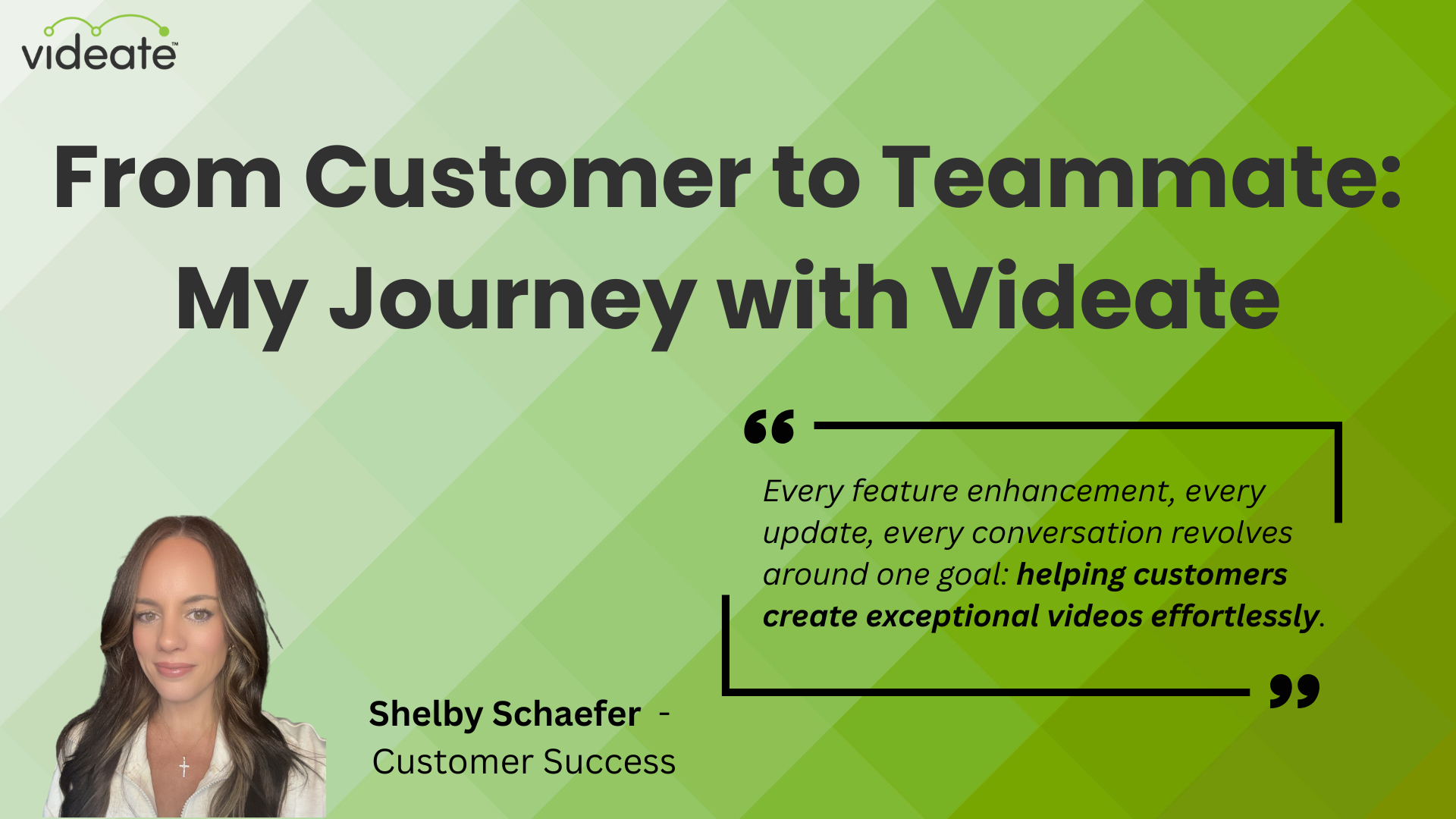.png)
When you think of a video solution, you often picture one team using it—maybe Customer Onboarding or Training. But what happens when you realize you’re maintaining hundreds of tutorial videos, every one of which goes stale as soon as your UI changes? That’s when video stops being a departmental tool and becomes an enterprise-level asset.
At Videate, we built for that shift.
The Trap Every CS & Education Team Falls Into
For many Customer Success and Customer Education teams, video tutorials have been a core part of the playbook for years. They’ve been using tools like Camtasia, Loom, Synthesia, and others. They know how to record a screen, craft narration, export, publish—and then deal with the fallout when the product changes.
When that change happens, the ripple effect is real:
-
The tutorial no longer matches the UI → customers get confused.
-
Support tickets spike (“Why does my screen look different?”).
-
The team spends hours re-recording or editing instead of driving value.
-
The video library falls behind, becomes a liability, and ultimately erodes trust in your product.
The Paradigm Shift: Smart Updates & Scale
This is where Videate’s defining differentiator comes into play: Smart Updates.
Rather than treating each video as a static asset, we built a system where videos update alongside your product.
Here’s how it works:
-
Videate Studio records at the code level, so it knows when UI elements shift, buttons move, modals change—even micro copy tweaks.
-
With Smart Updates, you hit “refresh” and affected videos regenerate — narration, visuals, voice-over, everything — without re-recording.
-
You shift from “record-patch-repeat” to “build once, update forever.”
-
Because of that shift, your video library becomes a living asset rather than a sunk cost.
What That Means for CS & Education Teams
When you get off the treadmill of manual updates, you unlock different possibilities:
-
Less time fighting fires: instead of spending hours chasing stale content, the team has bandwidth for strategic work—new tutorials, deeper curriculum, global rollout.
-
Better self-service: when videos match the live product, users find answers themselves, fewer tickets hit your queue.
-
Faster onboarding: customers reach “first value” quicker when they aren’t fighting outdated tutorials.
-
Global scale becomes feasible: localization, multiple languages, regional versions—all without replicating the full production burden.
The Results You Can Bank On
From our customer base, the typical outcomes for CS & Education teams using Videate are:
-
~ 25% reduction in support tickets in the first six months
-
~ 10% reduction in customer onboarding time in the first six months
-
~ 20% increase in customer satisfaction and product engagement when video content is kept current
-
~ 85-90% reduction in video production time compared to traditional tools (industry average is ~3-4 hours per minute of video)
These aren’t hypothetical—they’re real-world results from teams using the platform.
By adopting a “never working backwards” video strategy, CS & Education teams free up time and budget to do more of what matters — scaling reach, improving adoption, and creating compelling content that reflects the product’s live state.
Why This Matters Organization-Wide
While this article focuses on Customer Success and Education, the trickle-down impact extends across the org:
-
Product Marketing benefits from current demo videos.
-
Technical Documentation aligns with video assets.
-
Onboarding and enablement teams gain a consistent foundation.
In other words, video stops being an isolated effort and becomes a strategic lever across the business.
What You Should Do Next
-
Audit your current video library: How often do videos go out of sync? What’s the cost (time, tickets, confusion) of those inaccuracies?
-
Shift mindset: see video not as a one-off asset, but as a live component of product, adoption, and education strategy.
-
Embrace automation: evaluate tools that support change detection, UI-aware recording, and batch updates.
-
Allocate time you free up toward high-impact initiatives: new curricula, global expansion, deeper feature coverage.
-
Track outcomes: support ticket volume, time to value, content freshness, customer engagement with video.
What’s Next
This post is part one of a series on how Videate is used across the organization. Next up: how Product and Enablement teams use video as a strategic launch-asset. Stay tuned.

From Customer to Teammate: My Journey with Videate

